This comprehensive multistreaming guide will help you understand what multistreaming is, why it matters, how to set it up, and how to make the most of it to grow your audience faster than ever before.
That’s where multistreaming comes in.
In today’s digital world, live streaming is one of the most powerful ways to engage audiences, build brands, and grow revenue. But what if you could stream to multiple platforms at the same time — like YouTube, Facebook, Twitch, and LinkedIn — without extra effort?
What Is Multistreaming?
Multistreaming, also known as simulcasting, means broadcasting your live stream to multiple platforms simultaneously.
For example, you can go live once and stream it at the same time on:
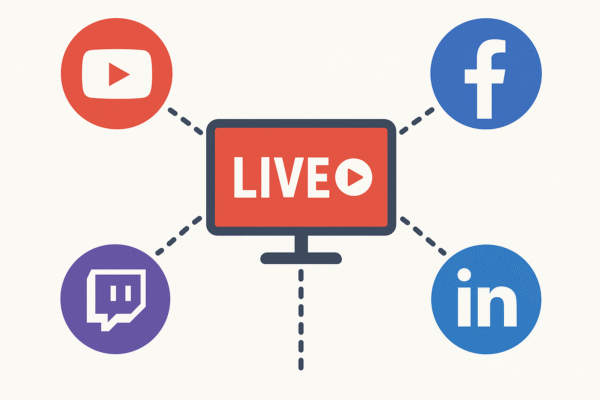
-
YouTube
-
Facebook Live
-
Twitch
-
LinkedIn Live
-
X (Twitter)
-
Or even your own website
It helps you reach viewers wherever they are — without making them switch platforms.
Why Multistreaming Matters for Creators and Businesses
If you’re a content creator, gamer, coach, or brand, your audience is scattered across different platforms. Some prefer YouTube, others scroll on Facebook, and a few use Twitch daily.
By multistreaming, you don’t have to choose — you can connect with all of them at once.
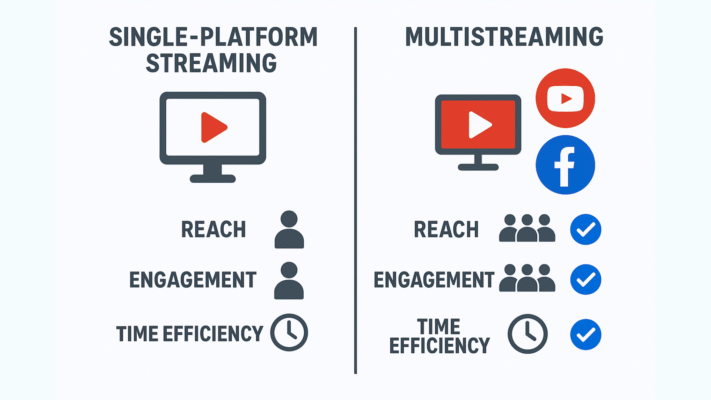
Key Benefits of Multistreaming Guide
-
Wider Reach:
Go live on multiple platforms and instantly expand your audience base. -
Increased Engagement:
Engage viewers from different communities — answer questions, get feedback, and grow faster. -
Better Brand Visibility:
The more places your stream appears, the more people recognize your brand or channel. -
Time Efficiency:
Instead of streaming separately, go live once and distribute everywhere. -
Higher Conversion Potential:
Businesses and creators can drive traffic to their websites, courses, or products from various platforms simultaneously.
How Multistreaming Guide Works
Multistreaming tools connect your live video feed to multiple platforms through the cloud or via software.
Here’s the general process:
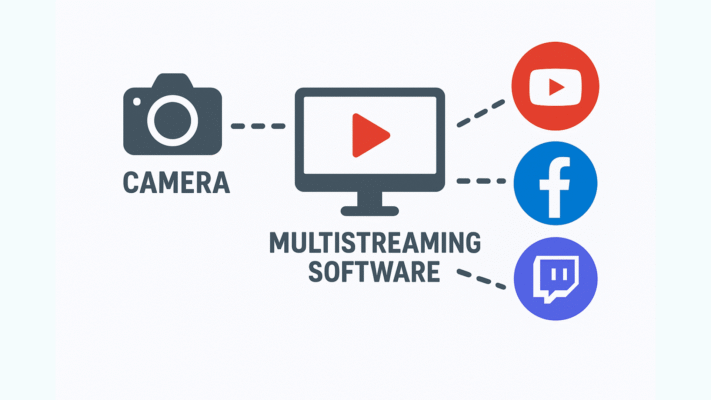
-
You connect your camera or streaming setup to a multistreaming platform (like Restream, StreamYard, or OBS with plugins).
-
That service sends your live video to several destinations (e.g., YouTube, Facebook, Twitch) at the same time.
-
Audiences from each platform can view, comment, and interact in real time.
Popular Multistreaming Platforms
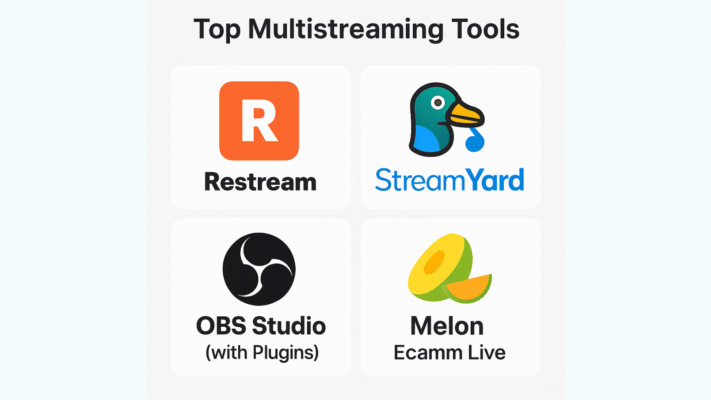
To start multistreaming effectively, you need reliable tools. Here are the best ones in 2025:
1. Restream (Multistreaming Guide)
One of the most popular options.
-
Supports 30+ platforms.
-
Browser-based (no heavy installation).
-
Includes live chat management and analytics.
2. StreamYard (Multistreaming Guide)
-
Easy for beginners.
-
Offers screen sharing, branding, and guest interviews.
-
Streams directly to multiple destinations.
3. OBS Studio (with Plugins)
-
Open-source and free.
-
Needs plugins like Multiple RTMP Outputs to multistream.
-
Best for creators comfortable with technical setups.
4. Melon or Ecamm Live
-
Perfect for podcasters and business streams.
-
Offers clean, professional layouts.
How to Set Up Multistreaming (Step-by-Step)
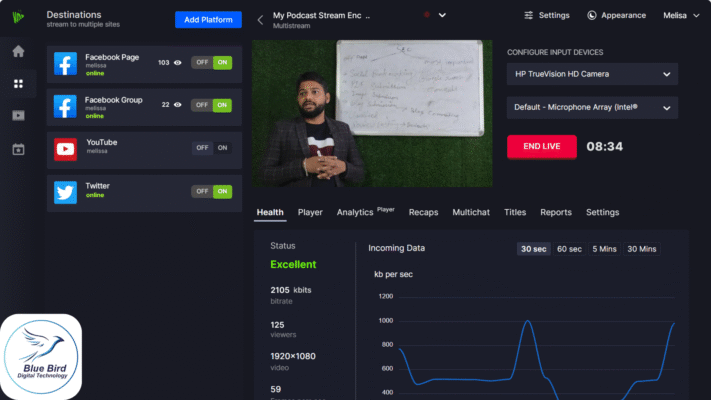
Step 1: Choose Your Platforms
Decide where your audience spends most of their time — YouTube, Twitch, Facebook, or LinkedIn. Focus on 2–3 platforms first for better engagement.
Step 2: Select a Multistreaming Guide Tool
Pick one of the tools above based on your budget and comfort level. Beginners should start with StreamYard or Restream.
Step 3: Connect Your Accounts
Link your social media or streaming accounts to the chosen multistream tool. Most services offer one-click integration.
Step 4: Set Up Your Stream
Add a catchy title, description, and thumbnail that fits each platform’s style. Optimize your titles using the keyphrase “multistreaming guide” to improve visibility.
Step 5: Test Before You Go Live
Always run a private test stream. Check:
-
Audio and video quality
-
Internet speed
-
Overlay and chat visibility
Step 6: Go Live
Once everything looks good, hit the “Go Live” button. Engage with viewers across all platforms in real time.
Tips to Optimize Your Multistream for Better Engagement
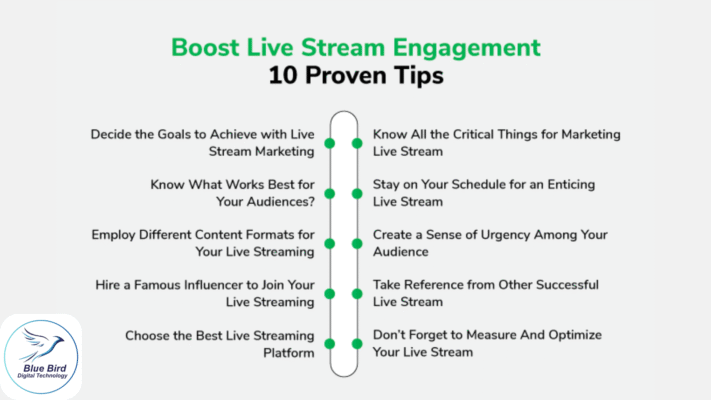
-
Interact With Every Platform
Read comments from all platforms using a unified chat (offered by Restream or StreamYard). Respond to everyone to build trust. -
Use Custom Branding
Add your logo, lower-thirds, and background image for a professional touch. -
Add Captions and Overlays
These help keep the audience engaged and make your content look polished. -
Promote Your Stream in Advance
Schedule your live sessions and share the link across all your social channels. -
Analyze Performance
After streaming, review analytics to see where you got the most viewers and engagement.
Common Mistakes to Avoid When Multistreaming Guide
Even though multistreaming is powerful, beginners often make small mistakes that limit their reach:
-
Ignoring Platform Rules: Each platform has unique policies (e.g., Twitch exclusivity for affiliates). Check before streaming everywhere.
-
Poor Internet Speed: Multistreaming requires stable upload bandwidth.
-
Neglecting Audience Interaction: Don’t just talk — engage.
-
Overcomplicated Setup: Start simple before investing in advanced gear.
Avoid these errors to keep your multistream smooth and professional.
SEO Tips for Your Multistreaming Content
If you want your live videos to perform well, optimize your stream for SEO and AdSense safety:
-
Include your focus keyphrase “multistreaming guide” in the title, first paragraph, and a few subheadings.
-
Write detailed descriptions for each platform’s live post.
-
Use relevant hashtags like #Multistreaming, #LiveStreaming, #StreamSetup.
-
Design custom thumbnails that clearly show your topic.
-
Add timestamps if you repurpose the stream into YouTube content later.
These steps not only increase reach but also maintain compliance with AdSense’s “high-value content” standards.
Monetization Tips for Multistreamers
Once your multistream setup starts growing, you can monetize effectively by:
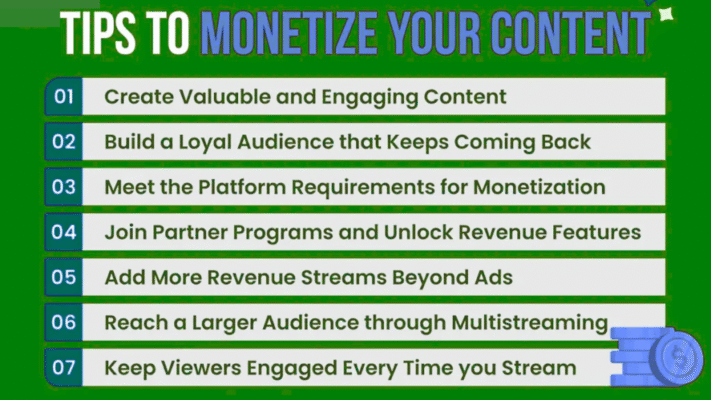
-
Enabling Ads on YouTube (through AdSense).
-
Accepting Super Chats or Stars on Facebook and YouTube.
-
Adding Affiliate Links in your video description.
-
Offering Sponsorships during live sessions.
-
Promoting Your Own Products or Courses.
Advanced Multistreaming Guide Strategies
-
Repurpose Your Streams:
Edit highlights into short videos for Reels, Shorts, or TikTok. -
Stream at Peak Times:
Analyze your analytics to find when most of your viewers are online. -
Collect Emails During Streams:
Share links to your landing page to grow your newsletter. -
Collaborate With Other Creators:
Invite guests for interviews — you’ll tap into their audiences too.
Multistreaming Is the Future of Live Content
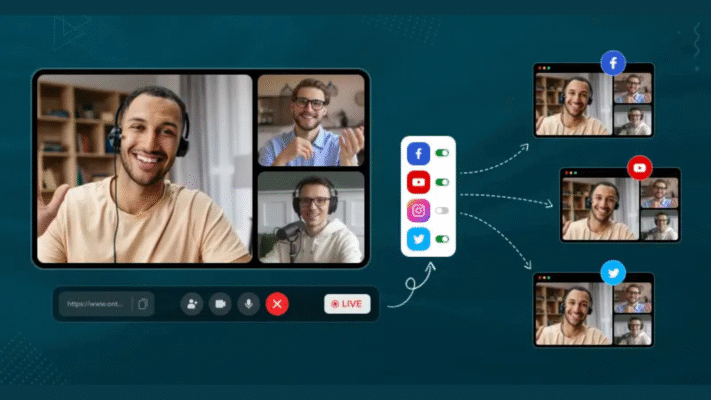
The world of live streaming is evolving fast. Whether you’re a YouTuber, gamer, educator, or business owner, multistreaming gives you a massive advantage — you reach more people, save time, and grow faster.
Instead of choosing between platforms, why not broadcast everywhere?
This multistreaming guide has given you everything you need — tools, setup steps, SEO practices, and engagement tips — to start streaming smarter, not harder.
Read:Top Live Streaming Platforms 2025: 7 Best Tools for Creators & Businesses

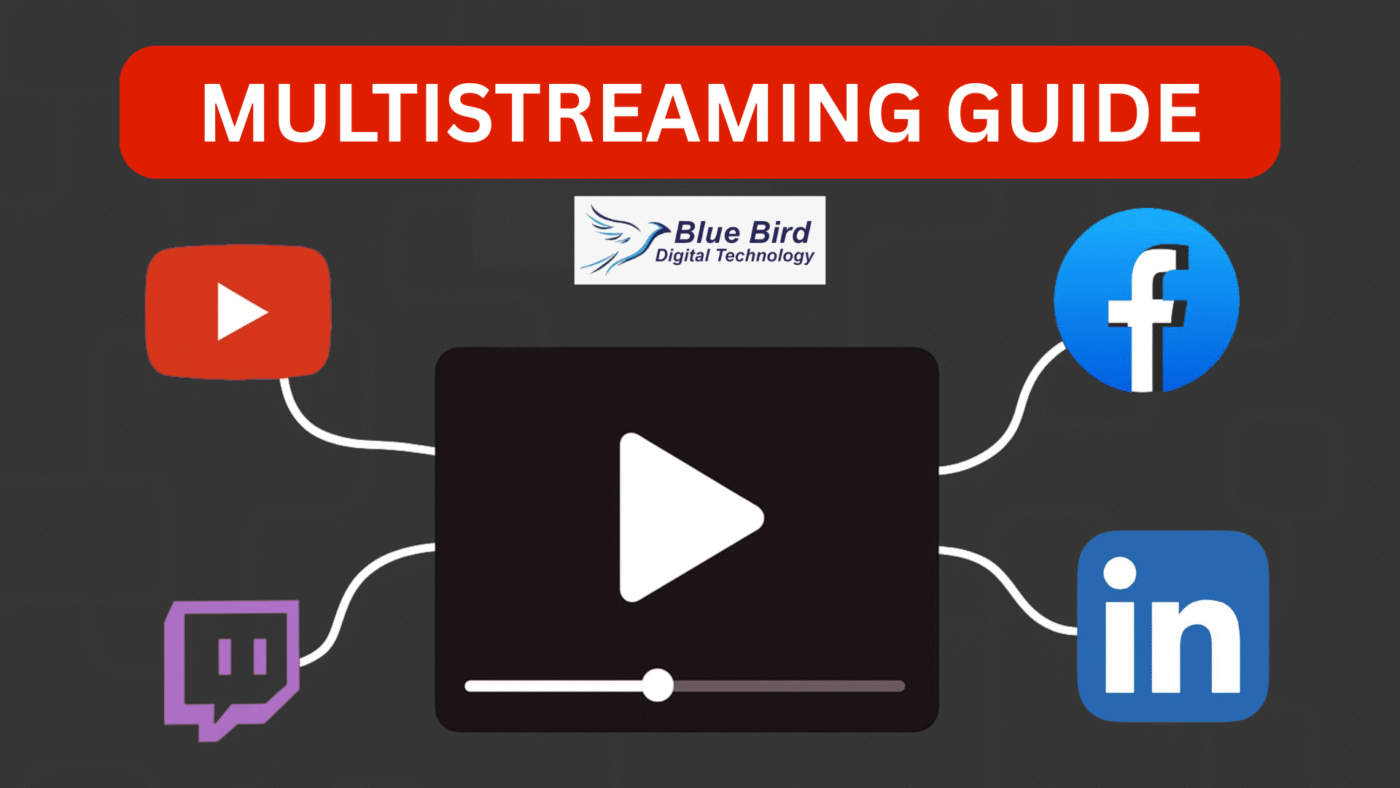
This guide is a goldmine! I’ve been streaming only on YouTube, but after reading this, I’m definitely going to try multistreaming to Facebook and Twitch too. Thanks for the step-by-step breakdown!
👌🏻
thank you dear
Super helpful post. I never knew tools like Restream and StreamYard could save so much time. The comparison chart was especially useful — made it easy to pick the right one for my setup.
thank you dear
Loved the depth of this article! It covers both beginners and pros. The tips about managing chat from multiple platforms were something I really needed.
thank you dear